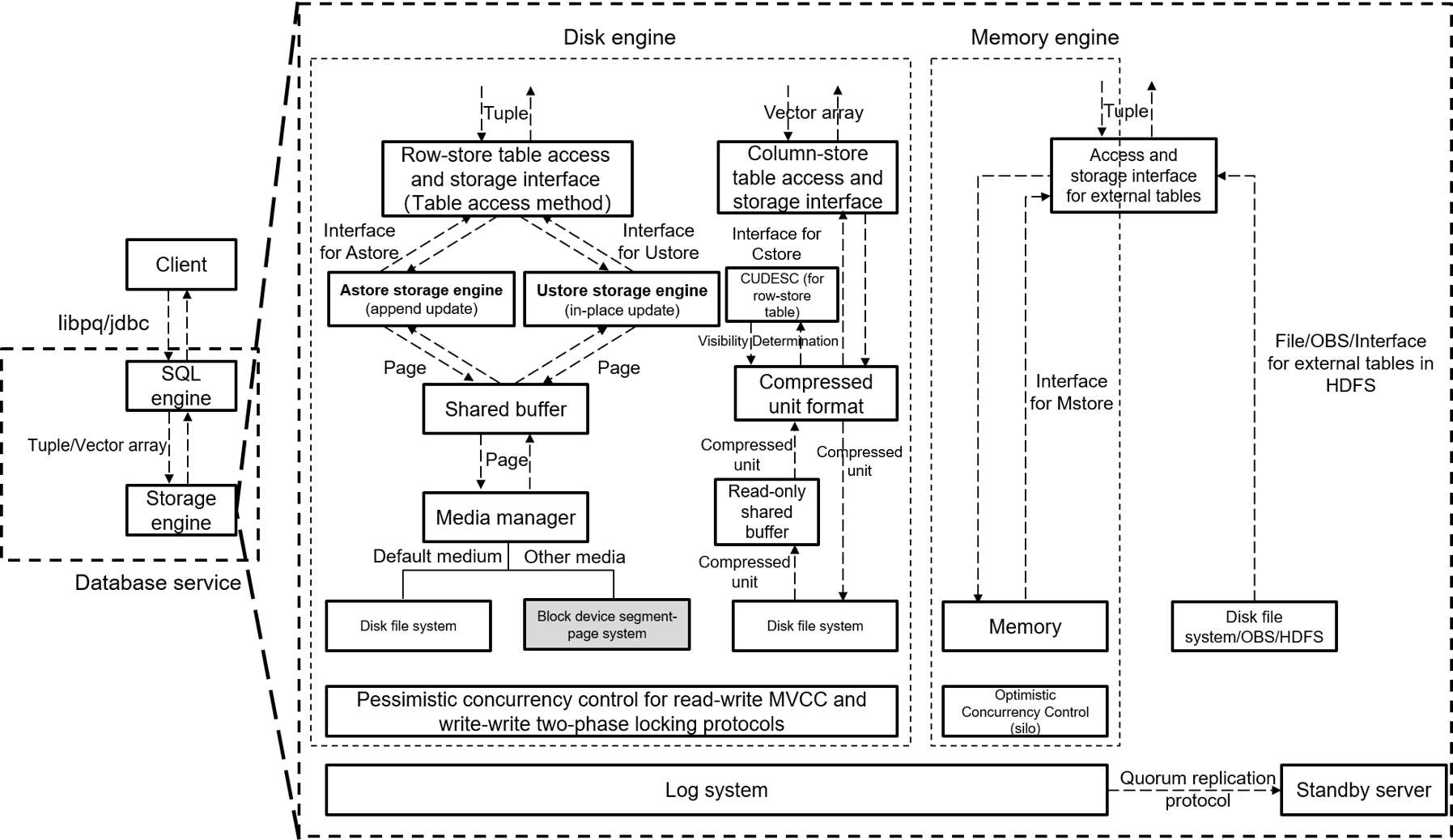Static Compilation Architecture
From the perspective of the entire database service architecture, the storage engine upward connects to the SQL engine to provide or receive data in a standard format (tuple or vector array) for or from the SQL engine, and downward reads data from or writes data to storage media by a specific data organization mode such as page, compress unit, or other forms through specific APIs provided by the storage media. GaussDB Kernel enables database professionals to select dedicated storage engines for meeting specific application requirements through static compilation. To reduce interference to the execution engines, the row-store table access method (TableAM) layer is provided to shield the differences caused by the underlying row-store engines so that different row-store engines can evolve independently. See the following figure.

On this basis, the storage engines provide data persistence and reliability capabilities through the log system. The concurrency control (transaction) system ensures atomicity, consistency, and isolation between multiple read and write operations that are executed at the same time. The index system provides accelerated addressing and query capabilities for specific data. The primary/standby replication system provides high availability of the entire database service.
Row-store engines are oriented to online transaction processing (OLTP) scenarios, which are suitable for highly concurrent read and write operations on a small amount of data at a single point or within a small range. Row-store engines provide APIs upward to read tuples from or write tuples to the SQL engine, perform read and write operations downward on storage media by page through an extensible media manager, and improve read and write operation efficiency in the shared buffer by page. For concurrent read and write operations, multi-version concurrency control (MVCC) is used. For concurrent write and write operations, pessimistic concurrency control (PCC) based on the two-phase locking (2PL) protocol is used. Currently, the default media manager of row-store engines uses the disk file system API. Other types of storage media such as block devices will be supported in the future. The GaussDB Kernel row-store engine can be the append update-based Astore or in-place update-based Ustore.
Feedback
Was this page helpful?
Provide feedbackThank you very much for your feedback. We will continue working to improve the documentation.See the reply and handling status in My Cloud VOC.
For any further questions, feel free to contact us through the chatbot.
Chatbot





